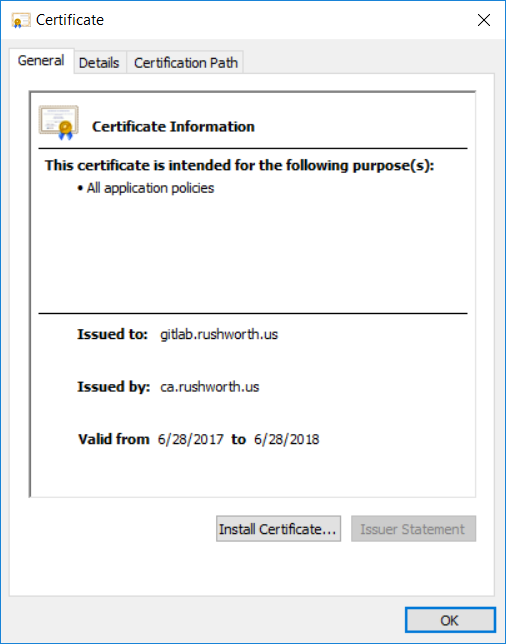There are wrappers for OpenSSL that provide certificate authority functionality, but I found myself spending a lot of time trying to get any to work. Since I only wanted to generate a few internal certificates (i.e. not something that needed a simple interface for non-techies), so I set up an OpenSSL certificate authority and used it to sign certificates.
First, generate a public/private keypair for your CA (use however many days you want, this is ten years:
openssl genrsa -aes256 -out ca.key 2048
openssl req -new -x509 -key ca.key -out ca.cer -days 3652 -sha256
Take ca.cer and publish it in our domain GPO as a trusted root certificate authority (Computer Configuration => Policies => Windows Settings => Security Settings => Public Key Policies => Trusted Root Certification Authorities)
If you are impatient, force client to update GPO. Otherwise wait. Eventually you will see your CA in the Windows computer’s certificate store as a trusted root certification authority.
Now generate certificate(s) against the CA (again use whatever value for days is reasonable for your purpose):
openssl genrsa -aes256 -out gitlab.rushworth.us.key 2048
openssl req -new -key gitlab.rushworth.us.key -out gitlab.rushworth.us.req
openssl x509 -req -in gitlab.rushworth.us.req -out gitlab.rushworth.us.cer -days 365 -CA /ca/ca.cer -CAkey /ca/ca.key -sha256 -CAcreateserial
On subsequent requests, you can omit the “-CAcreateserial” option.
In domain clients will trust your certificate. Non-domain clients will need to import the CA public key to their trust store.

